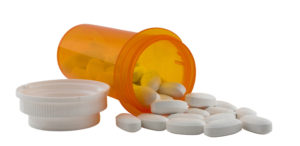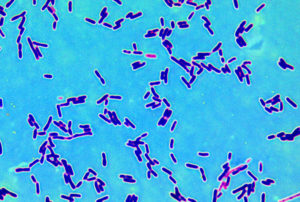Textbooks will have to be rewritten with the recent discovery of a system of lymphatic vessels that are a direct link from the immune system to the brain. Amazing that after centuries of studying people, that only now was this system detected (but they are very small and they follow a major blood vessel down into the sinuses). After extensive research, the researchers determined that these vessels carry both fluid and immune cells from the cerobrospinal fluid, and that they exist in humans. The discovery reinforces findings that immune cells are present even within healthy brains, a notion that was doubted until recently.From Medical Daily:
Discovery Of 'Missing Link' Between Brain And Immune System Could Change How Disease Is Studied
The recent discovery of a "missing link" between the brain and the immune system may lead to a complete revision of biology textbooks. The link, vessels of the lymphatic system that run through the sinuses, were previously unidentified and thought not to exist. However, the true significance of the discovery lies in the potential effects this finding could have on both the study and treatment of neurological diseases such as Alzheimer’s disease and multiple sclerosis.
The newly discovered "central nervous system lymphatic system vessels" follow a major blood vessel down into the sinuses, an area that has been traditionally difficult to obtain images of. Their presence is causing a stir in the medical world, as the researchers responsible believe the vessels may help to explain current medical mysteries, such as why patients with Alzheimer’s disease have accumulations of large protein plaques in the brain.
The fascinating discovery was made by researchers at the University of Virginia School of Medicine, and a study on the finding is currently available in the online journal Nature....Using a recently developed method, the team mounted the meninges, the membranes covering the brain, on a single slide so that they could be better observed. Only after doing this were they able to notice the brain’s elusive lymphatic vessels. "It's so close to the blood vessel, you just miss it," Kipnis said. "If you don't know what you're after, you just miss it."
The team believes that the “missing link” between the brain and the immune system could explain why some diseases like Alzheimer’s can cause plaque buildup in the brain. Kipnis believes this plaque may be the result of the meningeal lymphatic vessels not efficiently removing buildup before it reaches the brain. Although scientists are currently not sure what causes cell death and tissue loss in the brains of those with Alzheimer’s, this plaque buildup is believed to play a role.
It’s not just the presence of plaque in the brain that the researchers hope this discovery can shed light on. According to Kipnis, this discovery could completely change the way we perceive the neuro-immune interaction.“We believe that for every neurological disease that has an immune component to it, these vessels may play a major role,” Kipnis said. “Hard to imagine that these vessels would not be involved in a [neurological] disease with an immune component.”The vessels also appear to look different with age, which has lead the researchers to suggest that they may play a role in the aging process.

Maps of the lymphatic system: old (left) and updated to reflect UVA's discovery. Credit: University of Virginia Health System

 Another good reason to breastfeed. Exposure to pollutants like nitrogen dioxide and airborne particles can cause negative effects on motor and mental development in infants, but a new study says those effects are countered in babies who are breast-fed for at least 4 months by their mothers. Researchers in Spain began monitoring rural, pregnant women in 2006 and analyzed samples from 638 women and their infants at 15 months. They reported that babies who are breast-fed did not suffer from the potentially harmful developmental impact of PM2.5 (pollution particle matter) and NO2 (nitrogen dioxide). From Science Daily:
Another good reason to breastfeed. Exposure to pollutants like nitrogen dioxide and airborne particles can cause negative effects on motor and mental development in infants, but a new study says those effects are countered in babies who are breast-fed for at least 4 months by their mothers. Researchers in Spain began monitoring rural, pregnant women in 2006 and analyzed samples from 638 women and their infants at 15 months. They reported that babies who are breast-fed did not suffer from the potentially harmful developmental impact of PM2.5 (pollution particle matter) and NO2 (nitrogen dioxide). From Science Daily: Finding out that so many of probiotics currently contain traces of
Finding out that so many of probiotics currently contain traces of  Finding endocrine disrupting chemicals in 2 out of 10 baby teethers, which are supposedly safe products for babies, is disturbing. Unfortunately the study did not give the manufacturers names. There was even an 11th teether made of natural rubber that was found to leach compounds that were "
Finding endocrine disrupting chemicals in 2 out of 10 baby teethers, which are supposedly safe products for babies, is disturbing. Unfortunately the study did not give the manufacturers names. There was even an 11th teether made of natural rubber that was found to leach compounds that were " Controversy exists over whether healthy people should take
Controversy exists over whether healthy people should take  You can deceive yourself by calling yourself "big-boned" or "hefty", but your urine doesn't lie! Researchers found 29 biological markers in urine that are associated with body mass. These biological markers in urine are a "metabolic signature" of obesity. Note: Body mass index (BMI) is a measure of body fat based on height and weight that applies to adult men and women. From Medical Xpress:
You can deceive yourself by calling yourself "big-boned" or "hefty", but your urine doesn't lie! Researchers found 29 biological markers in urine that are associated with body mass. These biological markers in urine are a "metabolic signature" of obesity. Note: Body mass index (BMI) is a measure of body fat based on height and weight that applies to adult men and women. From Medical Xpress: This nice general summary of what scientists know about the microbial community within us was just published by a division of the NIH (National Institutes of Health). Very simple and basic. From the National Institute of General Medical Sciences (NIGMS):
This nice general summary of what scientists know about the microbial community within us was just published by a division of the NIH (National Institutes of Health). Very simple and basic. From the National Institute of General Medical Sciences (NIGMS): Another study finding negative effects of air pollution - this time high levels of traffic-related air pollution is linked to slower cognitive development among 7 to 10 year old children in Barcelona, Spain. From Science Daily:
Another study finding negative effects of air pollution - this time high levels of traffic-related air pollution is linked to slower cognitive development among 7 to 10 year old children in Barcelona, Spain. From Science Daily: